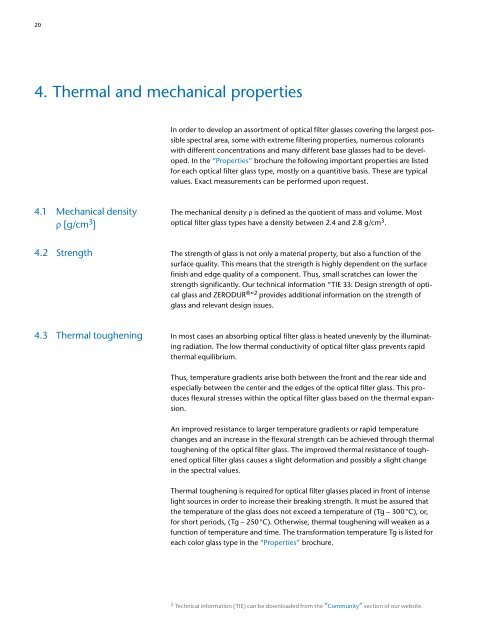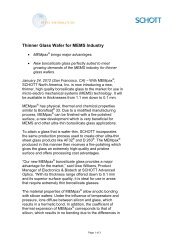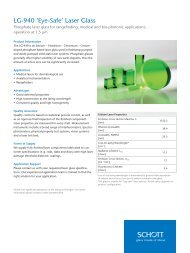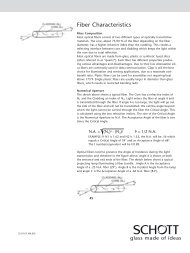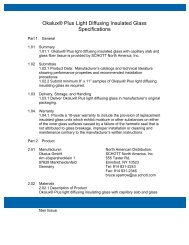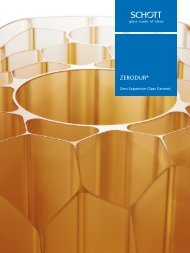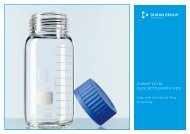Optical Filters 2013 - SCHOTT North America
Optical Filters 2013 - SCHOTT North America
Optical Filters 2013 - SCHOTT North America
Create successful ePaper yourself
Turn your PDF publications into a flip-book with our unique Google optimized e-Paper software.
204. Thermal and mechanical propertiesIn order to develop an assortment of optical filter glasses covering the largest possiblespectral area, some with extreme filtering properties, numerous colorantswith different concentrations and many different base glasses had to be developed.In the “Properties” brochure the following important properties are listedfor each optical filter glass type, mostly on a quantitive basis. These are typicalvalues. Exact measurements can be performed upon request.4.1 Mechanical densityρ [g/cm 3 ]The mechanical density ρ is defined as the quotient of mass and volume. Mostoptical filter glass types have a density between 2.4 and 2.8 g/cm 3 .4.2 StrengthThe strength of glass is not only a material property, but also a function of thesurface quality. This means that the strength is highly dependent on the surfacefinish and edge quality of a component. Thus, small scratches can lower thestrength significantly. Our technical information “TIE 33: Design strength of opticalglass and ZERODUR ® ” 2 provides additional information on the strength ofglass and relevant design issues.4.3 Thermal tougheningIn most cases an absorbing optical filter glass is heated unevenly by the illuminatingradiation. The low thermal conductivity of optical filter glass prevents rapidthermal equilibrium.Thus, temperature gradients arise both between the front and the rear side andespecially between the center and the edges of the optical filter glass. This producesflexural stresses within the optical filter glass based on the thermal expansion.An improved resistance to larger temperature gradients or rapid temperaturechanges and an increase in the flexural strength can be achieved through thermaltoughening of the optical filter glass. The improved thermal resistance of toughenedoptical filter glass causes a slight deformation and possibly a slight changein the spectral values.Thermal toughening is required for optical filter glasses placed in front of intenselight sources in order to increase their breaking strength. It must be assured thatthe temperature of the glass does not exceed a temperature of (Tg – 300 °C), or,for short periods, (Tg – 250 °C). Otherwise, thermal toughening will weaken as afunction of temperature and time. The transformation temperature Tg is listed foreach color glass type in the “Properties” brochure.2 Technical information (TIE) can be downloaded from the “Community” section of our website.


